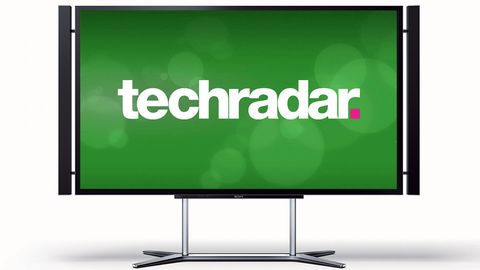Why you can trust TechRadar
With its native Ultra HD resolution, it's in this picture quality section that the Sony KD-84X9005 really needs to shine if it's to in any way justify its terrifyingly high price.
Thankfully that's exactly what it does, providing us with arguably the most potent glimpse yet of just what a difference Ultra High Definition can make to your AV quality of life.
To cater for our native UHD testing needs given the absence of commercially available 4K content, Sony provided a powerful PC running a loop of native Ultra High Definition footage the brand had shot itself using its own 4K cameras.
And every single frame of this footage - which incorporated such delights as shots of stunning seaside towns, fancy Spanish villas, the Berliner Philharmoniker orchestra, a girl paddling in the sea, and a staged football match - looked nothing short of stunning.
The level of detail in the pictures is almost hard to comprehend. You can clearly see such minutiae as brickwork texture, clothing weaves, and not just individual leaves on trees but even the veins and ridges of those leaves.

As well as being mesmerising in itself, this level of detail enables you to sit notably closer to the screen without the picture 'breaking up' than you could with any similarly huge 1920 x 1080-resolution screen. This enables you to become more immersed in what you're viewing, because the image fills more of your field of vision.
The extra resolution of the Ultra High Definition images also extends the apparent depth of pictures, even in 2D mode.
Because where distant objects on 1080p screens look indistinct and thus ultimately flattened, the Sony KD-84X9005 can retain detail to an almost infinite point in the distance, so that your eye can more readily deliver the illusion of depth in the 2D image.
This might sound a bit technical, but it actually has a profound impact on how much you're drawn into the images you're watching.
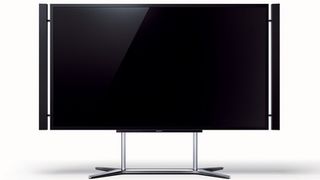
Switching back to a standard HD TV after watching the Sony KD-84X9005 strut its Ultra High Definition stuff is extremely revealing. Suddenly those 1080p images you'd previously thought were so crisp and sharp look noticeably soft and low on depth.
More to the point, you just don't get lost in them quite so much, because a 1920 x 1080 pixel count doesn't get anywhere near as close to matching the optical acuity of your eyes as 3840 x 2160 does. So inevitably your brain is never going to engage with 1920 x 1080 in quite so direct a way.
We'll come back to this point again presently, but first we also need to discuss Ultra HD impact on colour. Again it's profound, thanks to the way having nearly four times as much native resolution enables colour blends to enjoy pretty much infinite subtlety, completely free of any banding or blocking flaws.
As well as making pictures look much more lifelike and colours much more natural, this extra colour resolution again enhances the sense of depth of some images, as your brain finds it easier to perceive the 'solidity' of objects in the 2D frame.
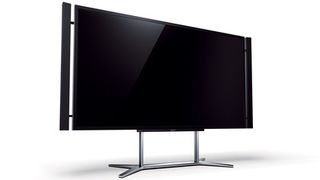
All this talk of extra detail, extra colour resolution and extra sharpness, though, doesn't really impart what's truly great about seeing Ultra High Definition images on a high quality 84-inch screen.
For that we refer back to the 'optical acuity' point we made earlier. Ultra HD pictures are simply so great a leap on from standard HD on a large screen that it completely changes the way you invest in what you're watching.
It's much easier to get entirely transported to and lost in the emotions of the film/TV world on show. In this respect it gets much closer to the experience of going to the cinema than you could ever get with even the best 1920 x 1080 TV.
It's worth adding here, too, that remarkably Sony's Reality Creation system somehow seems able to make native Ultra High Definition sources look even higher resolution than they would naturally. Toggling the system on while watching 4K appears to add an even greater level of crispness to proceedings. Crazy. But in a good way.
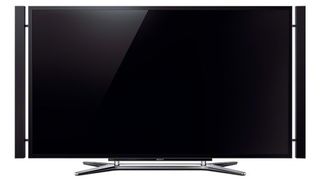
Fortunately given the lack of Ultra HD content in the world right now, Sony's new 4K X-Reality Pro system also works wonders when upscaling normal broadcast and Blu-ray HD sources.
Somehow it manages to interpolate into the image nearly four times the number of pixels contained in the original source in real time without causing such potential processing-related horrors as input lag, colour inconsistencies and excessive grain.
To be clear, the resulting upscaled images aren't a match for native 4K content in terms of their sharpness or clarity. But they certainly look far sharper than they would in their 'native' 1920 x 1080 state, and are largely immune to the jagged edges and sense of horizontal line structure usually visible with extremely large HD screens.
One little niggle is that Sony has set the Reality Creation system associated with the Sony KD-84X9005's upscaling a little too high in its out of the box state, resulting in small objects looking rather pixellated. But this can readily be solved by reducing the sharpness component of the Reality Creation system, slightly increasing the noise filtering component.
Take these simple precautions, and the impact of Sony's upscaling is genuinely profound.
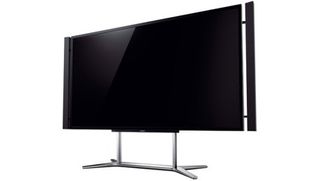
Also helping justify the £25,000/US$24,999.99 (around AU$38,765) price tag is the 3840 x 2160 resolution's impact on 3D. In fact, the Sony KD-84X9005 produces the most flat-out enjoyable 3D experience we've ever had in our test room.
This is because, as discussed in the Features section of this review, it delivers all the benefits of the passive 3D format - no flicker, practically no crosstalk, a relatively unfatiguing experience - with none of the negatives (horizontal image structure interference, jagged edges, a sense of lost resolution).
The brilliance of the Sony KD-84X9005's passive 'argument' potentially falls down, of course, should anyone ever deliver native Ultra High Definition 3D sources, as it would only be able to present these with a reduced resolution thanks to the way the passive 3D system 'shares out' the horizontal line resolution. But with even 2D 4K seeming still a way off, 3D 4K seems a very distant dream indeed.
You might reasonably expect the Sony KD-84X9005 to come a serious cropper with standard definition material, given the sheer processing logistics involved in converting such a low-res source into something with more than 8 million pixels in it.
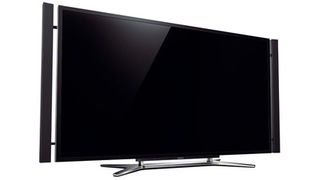
But again the prodigious processing power of Sony's X-Reality engine comes up trumps, adding plenty more sharpness and a far greater sense of detail to a standard definition source without - so long as the source is of at least a half-decent standard - emphasising or failing to deal with source noise.
Clearly we'd always suggest that a £25k/US$25k TV with the attributes of the Sony KD-84X9005 be fed as much HD - or better - content as possible. But on those rare occasions these days where you really can't avoid standard definition, at least the Sony KD-84X9005 won't leave you staring at the upscaled televisual equivalent of a car crash.
There's only one issue we have with the Sony KD-84X9005's picture quality, and that concerns the uniformity of its backlight. The main test sample used for this review showed clear signs of backlight 'clouds', where parts of dark scenes look brighter than others due to the screen not being able to distribute its edge-based LED lighting evenly.
However, having seen other running samples of the Sony KD-84X9005 on previous occasions that didn't suffer nearly as badly with this problem, we're inclined to take Sony's word for it that our test sample was suffering a slight fault in this department.
John has been writing about home entertainment technology for more than two decades - an especially impressive feat considering he still claims to only be 35 years old (yeah, right). In that time he’s reviewed hundreds if not thousands of TVs, projectors and speakers, and spent frankly far too long sitting by himself in a dark room.
